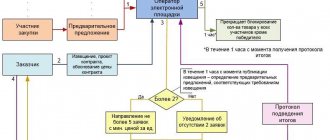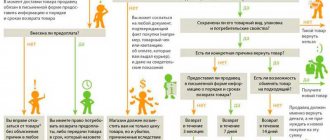Article 162 of the Criminal Code of the Russian Federation. Robbery
New edition of Art.
162 of the Criminal Code of the Russian Federation 1. Robbery, that is, an attack for the purpose of stealing someone else’s property, committed with the use of violence dangerous to life or health, or with the threat of using such violence -
shall be punishable by forced labor for a term of up to five years, or by imprisonment for a term of up to eight years, with or without a fine in the amount of up to five hundred thousand rubles or in the amount of the wages or other income of the convicted person for a period of up to three years.
2. Robbery committed by a group of persons by prior conspiracy, as well as with the use of weapons or objects used as weapons, -
shall be punishable by imprisonment for a term of up to ten years with or without a fine in the amount of up to one million rubles or in the amount of the wages or other income of the convicted person for a period of up to five years and with or without restriction of freedom for a term of up to two years.
3. Robbery committed with illegal entry into a home, premises or other storage facility or on a large scale, -
shall be punishable by imprisonment for a term of seven to twelve years with or without a fine in the amount of up to one million rubles or in the amount of the wages or other income of the convicted person for a period of up to five years and with or without restriction of freedom for a term of up to two years.
4. Robbery committed:
a) an organized group;
b) on an especially large scale;
c) causing grievous harm to the health of the victim, -
shall be punishable by imprisonment for a term of eight to fifteen years with or without a fine in the amount of up to one million rubles or in the amount of the wages or other income of the convicted person for a period of up to five years and with or without restriction of freedom for a term of up to two years.
Robbery (Article 162 of the Criminal Code)
The object of the crime is property, as well as the person.From the objective side, robbery is expressed in the theft of someone else's property through an attack combined with the actual use of violence dangerous to the life and health of the victim, or with the threat of such violence. An attack should be understood as an open or hidden unexpected violent influence on the victim with the aim of taking possession of someone else's property.
An attack can be expressed, for example, in an overt or secret impact on the victim with the use of various nerve-paralytic, toxic agents (gas cartridges, pistols, aerosols, etc.). An attack can be expressed by various actions: blows, shots from a weapon, etc. Violence that is dangerous to the life and health of the victim can be both physical and mental (infliction of physical pain - torture, suffocation, beatings, etc., or a threat to kill the victim, cause harm to health, etc.), while the victim must perceive the threat to his life and health as real.
Robbery is considered completed from the moment the robbery is committed, regardless of whether the perpetrator managed to cause real harm to the victim or take possession of his property.
From the subjective side, robbery is characterized by direct intent.
The motive is self-interest.
The goal is to extract illegal profit.
The subject of the crime is a person over 14 years of age.
Qualified types of robbery are:
- robbery committed by a group of persons by prior conspiracy, repeatedly, with illegal entry into a home, premises or other storage facility with the use of weapons or objects used as weapons (clauses “a” - “d”, part 2 of article 162),
- robbery committed by an organized group in order to seize property on a large scale, causing grievous harm to the health of the victim, or by a person previously convicted two or more times for theft or extortion (clauses “a”-“d”, part 3 of article 162 of the Criminal Code ).
Armed robbery is recognized if the perpetrator uses various types of weapons (gun, pistol, etc.) during the attack in order to take possession of someone else's property. The use of weapons or other objects (axe, stone, etc.) to commit a robbery is understood as an attempt to inflict damage on the victim, as well as demonstration of them to the victim or third parties with the threat of using such weapons or other objects.
Causing serious harm to the health of the victim during a robbery is covered by the corpus delicti (clause “c” of Part 3) and additional qualifications under Art. 111 of the Criminal Code is not required. If the victim causes death due to negligence, which follows the infliction of grievous bodily harm, the act should be qualified under Part 4 of Art. 111 and 162 of the Criminal Code. Intentional murder during robbery is qualified under paragraph “h” of Part 2 of Art. 105 of the Criminal Code of the Russian Federation.
Property crimes
- Theft (Article 158 of the Criminal Code)
- Fraud (Article 159 of the Criminal Code)
- Misappropriation or embezzlement (Article 160 of the Criminal Code)
- Robbery (Article 161 of the Criminal Code)
- Robbery (Article 162 of the Criminal Code)
- Extortion (Article 163 of the Criminal Code)
- Theft of items of special value (Article 164 of the Criminal Code)
- Causing property damage by deception or abuse of trust (Article 165 of the Criminal Code)
Commentary on Article 162 of the Criminal Code of the Russian Federation
1. Robbery is one of the most dangerous crimes against property, always encroaching on two objects: someone else’s property and personal integrity. An optional object may be human life, health, or the constitutional right to the inviolability of the home.
2. The objective side of robbery is expressed in an attack on the victim, accompanied by physical or mental violence, dangerous to life or health, and aimed at taking possession of someone else’s property.
2.1. The difference between robbery and robbery with violence lies in the degree of violence used in order to seize someone else's property. Robbery constitutes an attack with the use or threat of use of violence dangerous to life or health. This is understood as violence that resulted in the infliction of serious or moderate harm to the health of the victim, as well as minor harm to health, causing a short-term health disorder or a minor permanent loss of general ability to work (see paragraph 2 of paragraph 21 of the Resolution of the Plenum of the Armed Forces of the Russian Federation No. 29).
2.2. Deprivation of life is not covered by robbery, and therefore it is qualified under the totality of paragraph “c” of Part 4 of Art. 162 and paragraph “h”, part 2, art. 105 as murder associated with robbery (see paragraph 22 of the Resolution of the Plenum of the Armed Forces of the Russian Federation No. 29).
2.3. Part 1 comment. Article qualifies an attack that, although it did not cause harm to the health of the victim, at the time of the use of violence created a real danger to his life or health (see paragraph 3 of paragraph 21 of the Resolution of the Plenum of the Armed Forces of the Russian Federation No. 29).
2.4. Robbery should be defined as the introduction into the victim’s body of potent, poisonous or intoxicating substances that are dangerous to life or health with the aim of rendering him in a helpless state and taking possession of someone else’s property (see paragraph 4 of paragraph 23 of Resolution of the Plenum of the Armed Forces of the Russian Federation No. 29).
2.5. In cases where the seizure of property is associated with a threat of violence that is of an uncertain nature, the issue of recognizing the actions of persons as robbery or robbery must be decided taking into account all the circumstances: the place and time of the crime, the number of criminals, the nature of the objects with which they threatened the victim, the victim’s subjective perception of the nature of the threat, etc.
3. The robbery is completed (by the main group) at the moment of the attack with the aim of stealing someone else’s property (see paragraph 6 of the Resolution of the Plenum of the Armed Forces of the Russian Federation No. 29).
4. The subjective side of robbery is characterized by guilt in the form of intent and selfish purpose. If an attack combined with violence was committed without the purpose of stealing the victim’s property, robbery is excluded.
5. The subject of a criminal offense may be a sane individual who has reached the age of 14 at the time of the commission of the crime.
6. Part 2 comments. The article provides for a criminal offense for robbery committed: a) by a group of persons by prior conspiracy; b) using weapons or objects used as weapons.
6.1. Preliminary conspiracy of a group of persons is understood in the same way as in theft and robbery, but with the difference that the content of the conspiracy is the intention to commit an attack dangerous to life or health, in order to steal someone else's property. However, it is not necessary that all members of the group intend or use violence. It is sufficient if it was assumed that the violence would be committed by one of the co-perpetrators or if it was committed by prior agreement of the co-perpetrators by one of them.
Another comment on Art. 162 of the Criminal Code of the Russian Federation
1. Robbery as a form of theft constitutes an attack for the purpose of stealing someone else’s property, committed with the use of violence dangerous to life or health, or with the threat of such violence.
An attack is an open or hidden (for example, a stab in the back, from an ambush) active actions aimed at achieving a criminal result by using violence against the victim (the owner, another owner of the property, a third party who can prevent the theft (for example, a watchman)) or creating a real threat of its immediate use.
A variant of an attack in relation to robbery is the use of potent, poisonous or intoxicating substances that are dangerous to life or health in order to render the victim helpless, as well as the use of dogs and other animals that pose a danger to human life or health (clause 23 of the Resolution of the Plenum of the Supreme Court of the Russian Federation dated December 27, 2002 No. 29 “On judicial practice in cases of theft, robbery and robbery”).
2. Violence dangerous to life or health should be understood as violence that resulted in the infliction of grave and moderate harm to the health of the victim, as well as the infliction of minor harm to health, causing a short-term health disorder or a minor permanent loss of general ability to work (clause 21 of the Plenum Resolution Supreme Court of the Russian Federation dated December 27, 2002 N 29).
The object of the use of violence (threat of its use) during robbery can be the owner, another owner of the property, as well as persons who are preventing or, in the opinion of the perpetrator, may prevent the theft; the object of the use of violence (the threat of its use) can also be relatives or close ones of the owner, owner of the property, if through influencing them the perpetrator tries to influence this person.
In addition, the violence used must be a means of taking or retaining someone else's property; if, after a secret or open non-violent theft, the perpetrator uses violence in order to avoid arrest, then the act does not constitute robbery (clause 3 of the Resolution of the Plenum of the Supreme Court of the USSR of September 5, 1986 No. 11 “On judicial practice in cases of crimes against personal property”) .
3. Robbery is recognized as a completed crime from the moment of an attack for the purpose of stealing someone else’s property, committed with the use of violence dangerous to life or health, or with the threat of such violence (clause 6 of the Resolution of the Plenum of the Supreme Court of the Russian Federation of December 27, 2002 N 29) .
4. The qualifying signs of robbery (Article 162 of the Criminal Code of the Russian Federation) partially coincide with similar signs of Art. 158 of the Criminal Code of the Russian Federation.
The sign of the use of weapons or objects used as weapons (Part 2) is considered in paragraph 23 of the Resolution of the Plenum of the Supreme Court of the Russian Federation of December 27, 2002 No. 29.
Robbery causing grievous harm to the health of the victim (clause “c” of part 4) is considered in clauses 21 - 22 of the Resolution of the Plenum of the Supreme Court of the Russian Federation of December 27, 2002 No. 29.
Article 162 of the Criminal Code of the Russian Federation. Robbery
Full text of Art. 162 of the Criminal Code of the Russian Federation with comments. New current edition with additions for 2021. Legal advice on Article 162 of the Criminal Code of the Russian Federation.
1. Robbery, that is, an attack for the purpose of stealing someone else’s property, committed with the use of violence dangerous to life or health, or with the threat of such violence, is punishable by forced labor for a term of up to five years or imprisonment for a term of up to eight years with a fine. in the amount of up to five hundred thousand rubles or in the amount of wages or other income of the convicted person for a period of up to three years or without it.
Definition of crime: what is it?
The Criminal Code of the Russian Federation (Criminal Code of the Russian Federation) in Article 162 defines that robbery is an attack for the purpose of stealing someone else’s property, committed:
- with the use of violence dangerous to life or health;
- with the threat of such violence.
Robbery refers to crimes against property.
Robbery is an attack, the purpose of which is theft, that is, unlawful gratuitous seizures and (or) conversion of someone else's property for the benefit of the perpetrator or other persons committed for selfish purposes, causing damage to the owner or other holder of this property.
Commentary on Article 162 of the Criminal Code of the Russian Federation
1. Composition of the crime: 1) object: main - social relations associated with property relations, regardless of its form; 2) objective side: an attack for the purpose of stealing someone else’s property, committed with the use of violence dangerous to life or health, or with the threat of such violence, 3) subject: a sane individual who has reached 14 years of age; 4) subjective side: characterized by a deliberate form of guilt (direct intent). The culprit is aware of the social danger of his actions aimed at openly stealing someone else's property with the use of violence, foresees the possibility or inevitability of dangerous consequences and desires their occurrence.
The crime is considered completed from the moment of the attack for the purpose of stealing someone else’s property, committed with the use of violence dangerous to life or health, or with the threat of such violence.
Qualifying criteria include the commission of a crime by a group of persons by prior conspiracy, as well as with the use of weapons or objects used as weapons (Part 2 of Article 162 of the Criminal Code of the Russian Federation).
A particularly qualified crime is robbery committed with illegal entry into a home, premises or other storage facility or on a large scale (Part 3 of Article 162 of the Criminal Code of the Russian Federation); robbery committed by an organized group; on a particularly large scale; with causing grievous harm to the health of the victim (Part 4 of Article 162 of the Criminal Code of the Russian Federation). Large size is the value of property exceeding 250 thousand rubles.
A particularly large size is the value of property exceeding 1 million rubles.
2. Applicable legislation: 1) Federal Law “On Weapons” (Article 2 - types of weapons; Article 3 - the concept of civilian weapons; Article 4 - the concept of service weapons; Article 5 - the concept of combat hand-held small arms and bladed weapons, etc. d.); 2) Decree of the Government of the Russian Federation dated August 17, 2007 N 522 “On approval of the Rules for determining the severity of harm caused to human health”; 3) order of the Ministry of Health and Social Development of the Russian Federation dated April 24, 2008 N 194n “On approval of Medical criteria for determining the severity of harm caused to human health.”
3. Judicial practice: 1) Resolution of the Supreme Court of the Russian Federation dated December 27, 2002 N 29 “On judicial practice in cases of theft, robbery and robbery”; 2) appeal ruling of the Moscow City Court dated May 13, 2013 in case No. 10-2889. The verdict in the robbery case was upheld, since the punishment assigned to the convicted person is fair and proportionate to the crime committed, corresponding to the social danger of the crime he committed and the personality of the perpetrator, fully meeting the objectives of correcting the convicted person and preventing him from committing new crimes, the type of correctional institution was assigned in accordance with the law .
Consultations and comments from lawyers on Article 162 of the Criminal Code of the Russian Federation
If you still have questions regarding Article 162 of the Criminal Code of the Russian Federation and you want to be sure of the relevance of the information provided, you can consult the lawyers of our website.
possible by phone or on the website. Initial consultations are held free of charge from 9:00 to 21:00 daily Moscow time. Questions received between 21:00 and 9:00 will be processed the next day.
Main types of robbery
Let's consider the main qualified types of robbery reflected in Article 162 of the Criminal Code.
- Robbery can be committed using weapons or any objects used as weapons. Such objects are recognized as things with which the criminal will be able to cause harm to the health or life of the victim. They can also serve to stupefy and immobilize the victim. For example, these items in court include sprayers and aerosols. Sometimes criminals threaten with obviously faulty, ineffective weapons. So, they often use mock-ups of pistols. If the victim of a crime understands that the weapon is worthless, the criminal’s actions are classified as robbery.
- Robbery is also committed by a group of people , having previously agreed on the crime. Such circumstances are aggravating. It does not matter how many individuals from the criminal group were directly involved in the illegal seizure of property. If a criminal group is united by one goal, intent, and intends to divide the stolen property, the court will determine the punishment for each of its participants. It’s just that here the criminals will be divided into performers and organizers. Everyone has wine. There is a special case: a criminal commits robbery using minors or insane persons as perpetrators. In such circumstances, the organizer will still be recognized as the performer. His actions will be qualified as the actions of a perpetrator, and the actual perpetrators cannot be held accountable if they are under 14 years of age or insane at the time of the commission of the crime.
- Robbery committed with illegal entry into a home, storage facility, or any other premises is especially classified. Unlawful entry is any intrusion, overt or covert, made unlawfully.
- Robbery on an especially large scale is also classified as a crime . This is recognized as a crime in which property with a total value of more than 250 thousand rubles is stolen. It is important that several actions can be classified as one crime if they are committed under the same circumstances and in the same way with the aim of stealing specific property. In this case, the court will take into account the total value of the property stolen over several times.
Now we know the concept of robbery, the basic composition of this crime, its types, signs, penalties.
Video: Lawyer on the qualifications of robbery, robbery and theft
Basic provisions
Robbery is understood as an attack with the purpose of stealing someone else's property using violence against a citizen.
It is important to understand that the main purpose of this offense is property. The violent actions of the offender committed against the victim are considered means of crime.
There are cases in practice when violence itself is not carried out, but there is a threat from which it can be concluded that it may be committed. This law contains clarifications on which the punishment depends.
It is necessary to be able to distinguish robbery from robbery under Article 161 of the Criminal Code of the Russian Federation. The elements of these offenses are the same, but robbery does not imply deprivation of life.
Defining these two crimes helps to understand the difference between them. The deprivation of life of a victim is not covered by this article. In this case, the offender will be convicted of murder associated with robbery.
No changes have been made to Article 162 of the Civil Code of the Russian Federation for quite some time. The last amendments to it were made in 2009. They were aimed at increasing the term of conviction for robbery.
Punishment
The offender can receive the following punishment for robbery:
- Work for up to 5 years or imprisonment for up to 8 years, and a monetary penalty is also possible.
- Based on Part 3 of Article 162 of the Criminal Code of the Russian Federation, if this crime is committed by a group of persons by prior conspiracy, then in this case the offender will be sentenced to imprisonment for a longer period with a possible fine. The accused will receive the same punishment for breaking into someone else's property.
- According to Part 4 of this article, the offender will receive the greatest punishment for committing a group robbery with major theft. The prison term for such a violation will be maximum. The fine will be up to 1 million.
Punishment by law
What article and how many years do they get for robbery?
The Criminal Code of the Russian Federation defines preventive measures (Article 162):
- Without aggravating circumstances: forced labor (up to 5 years), imprisonment (up to 8 years), fine (up to 500 thousand, income - up to 3 years).
- Committed by a group of people using weapons: imprisonment (up to 10 years), fine (up to 1 million, income - up to 5 years), restriction of freedom (up to 2 years).
- With illegal entry: imprisonment (7-12 years), fine (up to 1 million, income - up to 5 years), restriction of freedom (up to 2 years).
- Committed by an organized group, in a special amount, with grave harm: imprisonment (8-15 years), fine (up to 1 million, income - up to 5 years), restriction of freedom (up to 2 years).
A comment
It is important to know that this act is considered completed after violent actions or threats are carried out by the criminal.
That is, even if the criminal failed to take possession of the personal property of the victim, the act is still considered completed.
The punishment will also depend on the time the offender commits the crime.
The second and subsequent times the punishment will be much more severe, since the offender poses a serious danger to people's health.
For preparing for robbery and not carrying it out to completion due to circumstances beyond the control of the criminal, punishment is also provided.
Arbitrage practice
This dangerous act can be carried out on drivers with the aim of stealing vehicles or personal belongings using violent actions.
This example of a crime is the most common. The severity of guilt is determined after the investigation of the case. Various facts influence the verdict.
For example, whether the offender was under the influence of drugs or alcohol when committing the crime.
The main criterion includes the possibility of using a weapon or an item that replaces it. When determining the punishment, the court may take into account circumstances mitigating the guilt of the offender. These include:
- poor health;
- having a family;
- admission of guilt and cooperation with the investigation.
The statute of limitations for prosecution under this article is 10 years from the date of commission of the crime. It is important to know that the punishment in individual cases can vary significantly.
For the purpose of sentencing, the degree of guilt is determined and the facts are identified that can mitigate or vice versa if evidence aggravating the guilt appears.
For example, the investigation found that an armed attack had been committed. Robbery can be considered one of the most frequently committed crimes. A citizen who has committed a crime under this article is not entitled to amnesty.
Robbery - Article 162 of the Criminal Code of the Russian Federation for robbery
The Criminal Code of the Russian Federation establishes a clear definition of the concept of “robbery” - an attack that was committed with the purpose of stealing someone else’s property. It is worth noting that robbery, as a type of crime against property, can have different degrees of severity, and, accordingly, be qualified in legislation by different types of punishment. Corpus delicti:
- The object of the crime is a specific form of property, as well as human life and health.
- The objective side is an attack, expressed in a secret or overt nature, with the use of violence that is dangerous to the life and health of the person attacked.
- The subjective side is direct intent, in which the motive is self-interest, and the goal is the theft of someone else’s property.
- A subject is any person over 14 years of age.
It is obvious that the corpus delicti of such a crime as “robbery” is related in essence to “robbery”, which, according to paragraph “g” of Part 2 of Art. 161 of the Criminal Code of the Russian Federation can also be committed with the use of violence. However, there is a radical difference - robbery is committed with the use of violence that is dangerous to the life and health of the victim, and robbery is committed with the use of violence that is not dangerous to the life of a person or without it at all.
Article of the Criminal Code of the Russian Federation Robbery
As stated in criminal law, robbery includes actions aimed at taking possession of someone else's property, valuables, and money. Composition and characteristics of the crime:
- intentional attack;
- its goal is theft, the criminals must have a clear intention and desire to achieve it;
- there is violence or a threat to commit it.
In relation to the victim, violence must have a number of signs:
- be dangerous to his health at the time the crime is committed;
- cause harm to health.
There are additional signs.
Type and duration of punishment for the crime
According to paragraph 1 of Article 162 of the Criminal Code of the Russian Federation, a robbery can be committed with the use of violent actions that are dangerous to the life and health of the person attacked or with the threat of such actions. In this case, the crime provides for a maximum penalty of imprisonment for a term of up to 8 years with a fine of up to 500 thousand rubles or in the amount of wages (other income) of the convicted person for a period of up to 3 years. Also, this paragraph of the article provides for a more lenient punishment - forced labor for up to five years. The final type of punishment is determined by the court after examining the case on its merits and accepting all available mitigating and aggravating circumstances in relation to the accused.
Responsibility for robbery by a group of persons by prior conspiracy
An attack by a group of persons is an aggravating circumstance when sentencing. In this case, criminals face criminal liability for a longer period, especially if there are additional factors characterizing the crime in the case.
If a robbery under Article 162 of the Criminal Code of the Russian Federation was committed by a group of people and was carried out with the use of weapons that were demonstrated, used to intimidate or cause harm to health. Such a crime takes into account that it was planned in advance and the consequences were expected.
How many years do you get for robbery if no weapon was used and there was only one offender? He could be imprisoned for up to eight years. As an additional penalty, a fine is imposed, the amount of which cannot exceed five hundred thousand rubles.
When a group of persons carried out a robbery, the term increases to ten years. In this case, a fine may also be imposed.
If a robbery was committed with illegal entry into a residential premises, retail outlet or other buildings, and the amount stolen exceeds two hundred and fifty thousand rubles, the punishment increases to twelve years in prison. For such a robbery by a group of persons, Article 162 Part 2 also provides for the payment of fines.
If, as a result of a robbery, more than a million rubles were stolen, and serious damage to people’s health was caused, the most severe punishment will be applied - imprisonment for a term of up to fifteen years.
If the attack is committed by a group of people
Robbery committed by a group of persons by prior conspiracy, as well as with the use of weapons or other objects used as weapons, according to current Russian legislation, provides for a maximum penalty of up to 10 years in prison with a fine of up to one million rubles. This type of crime is regulated by paragraph 2 of Article 162 of the Criminal Code of the Russian Federation, which provides for the possibility of paying a fine in the amount of the convicted person’s salary for a period of up to 5 years and restriction of freedom for a period of up to 2 years.
Robbery committed by a group of persons by prior conspiracy
In a robbery by a group of persons by prior conspiracy, each criminal has his own role. Someone monitors the surroundings to warn the attackers of danger or the approach of law enforcement officers or neighbors. Others enter the premises and, through threats, demand the surrender of property and show weapons. Groups may also have spotters who search for and select victims.
This category of criminals is difficult to bring to justice, since they are not present at the scene of the attack.
Robbery as a particularly serious crime
Robbery is classified as a particularly serious type of crime in accordance with paragraphs. 3-4 of Article 162 of the Criminal Code of the Russian Federation. The law provides for a maximum penalty of up to 12 years in prison with a fine of up to one million rubles when the robbery is committed on an especially large scale or with illegal entry into a home, storage facility or premises. At the same time, the law establishes that such a crime can be punishable by imprisonment and up to 7 years in the presence of mitigating circumstances of the accused. The fine can be calculated in the amount of the convicted person’s salary for a period of up to five years. If the robbery is carried out:
- on a particularly large scale;
- organized group;
- causing grievous harm to the health of the person attacked;
This type of crime is punishable by imprisonment for a maximum of 15 years with a fine of up to one million rubles or in the amount of the convicted person’s salary for a period of up to five years. The minimum term provided for by law for such a crime is imprisonment for up to 8 years, with or without restriction of freedom for up to 2 years.
Punishment of the guilty persons
These crimes, encroaching on the property of citizens, are among the most serious, since they have an additional object - life and health. Therefore, liability for these illegal acts will be the most severe.
The maximum penalty for qualified robbery under Part 3 (committed by an organized group or on an especially large scale) will be imprisonment for a term of 6 to 12 years . The crime is characterized as particularly serious. According to Part 1, an alternative sanction is provided for robbery: from compulsory labor to imprisonment for up to 4 years . According to this part, the criminal act is characterized as of medium gravity.
Robbery with aggravating circumstances, provided for in Part 4, is punishable by maximum imprisonment (from 8 to 15 years). Qualified robbery is a particularly serious crime. The minimum term of imprisonment is provided for the main elements of robbery: up to 8 years, which classifies it as a crime of medium gravity.







